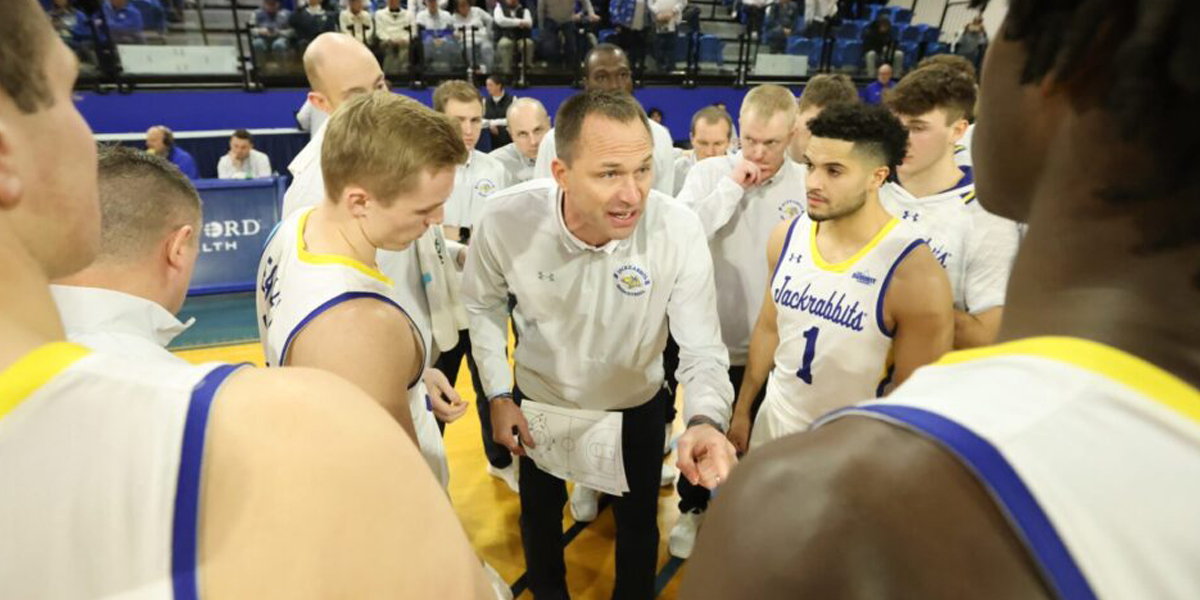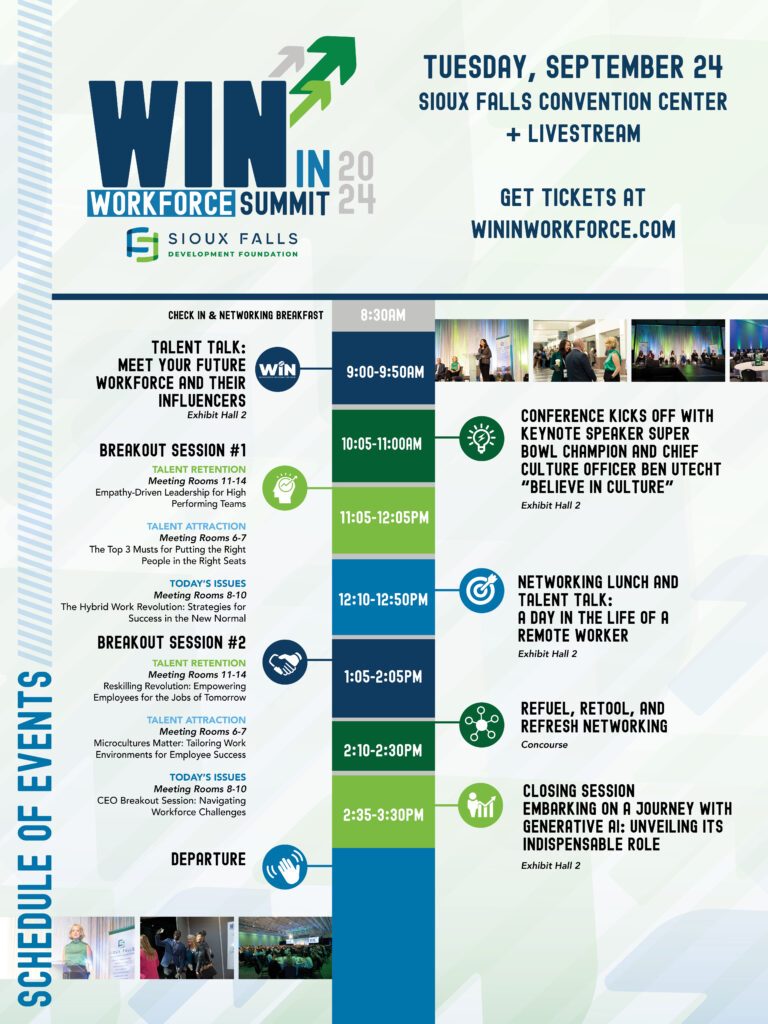
Get to know your future workforce — and their influencers — at upcoming summit
- September 4, 2024
A new generation is entering the workforce, bringing with it unique influences.
SDSU basketball coach Eric Henderson sees that firsthand on campus and on the court in Brookings.
Henderson will be one of four panelists sharing perspectives on the topic at the seventh annual WIN in Workforce Summit, presented by the Sioux Falls Development Foundation. The popular event will be from 9 a.m. to 3:30 p.m. Sept. 24 at the Sioux Falls Convention Center. Click here to learn more and register.
Henderson will be joined by Jerry Olszewski, head football coach at Augustana University, in addition to three high school and college students.
We caught up with Henderson to learn more about the generation that he leads and that others are welcoming into the workplace.
You work continually with students in Gen Z. What are some of the attributes that stand out?
The first attribute that stands out to me is the instant feedback. They’re so used to having things come to them quickly. Whether it’s their phone, the computer, the social media piece of it, they want that instant feedback, that instant gratification. So I think being able to do that for our student-athletes is really, really important, to talk about and evaluate and help instantly. And making sure they’re aware instantly is something that they can really relate to.
And then going back to the social media thing is making them feel valued. And because, OK, they’re going to post something on social media. They’re looking at how many likes they get, how many responses they get, and that can make them feel good. And so I think giving them value and making sure they understand where they stand, how you feel. And if you can do that in a positive way, it can be very, very beneficial and very helpful for your organization or for our team.
What approaches have you found that are helpful in motivating or coaching in this generation?
I think just trying to be super-positive, trying to talk about the good things that they’re doing first and then bringing up the things that they can really improve on. I think there’s so much negativity in the world. I think trying to be different, trying to make sure they understand that, hey, they have some great qualities. They have great things that they’re doing already. And then making sure you point them out. And then going into the areas of, hey, how can we get better? What are the areas that we can get better? Awesome.
I think having purpose and showing purpose is key. We use our circle emblem with our five character traits that are non-negotiable. And I think it translates to the workforce when you build that culture, and it doesn’t necessarily matter what the values are or what those keywords are. But just having some and staying true to them I think can keep things simple and keep things going forward in the right direction. And so that’s what we’ve used. And I think it’s helped our young people, our players, not only have success while they’re here, but when they leave here, they’re able to adapt, they’re able to join a community, join an organization and be successful.
Who do you find that this generation looks to as their influencers, and why?
They probably look to their peers more than we ever had. I think generations like mine or before me, it was presidents, it was teachers, it was coaches, and I do think there’s still some of that. We are able to have influence and positive influences on young people. But I think it’s a lot broader now for the new generation. I think they’re looking at their peers and what are they doing and trying to be like them. And the social media piece where you have the influencers on, where they want to look like them, they want to do things like them. Even though there’s those influencers, how much reality is really there through the internet, through social media, and how much they can make things look different than they actually are.
As your athletes transition from players to workers, do you have any advice for employers when it comes to leading them?
I think just making sure they understand that they’re not going to be perfect. And just helping them through tough times and trying to do that in a positive way because we’ve all made mistakes. They make mistakes, and how we respond to those mistakes, and it is really how you can find success. And so I think just being understanding of that, understanding of the emotions. I think the emotions of young people now are probably as a wide array of emotions that they’re going to have as they ever have been. It’s OK more now today to show your emotions than it ever has been. And I think when I was there, you just kind of just ignored the tough times and ignored the bad feelings, and nobody ever brought them up. And I think being aware that it’s OK to bring them up now, more people are more comfortable to do that. I think it’s probably something that I would give them.
As you keep in touch with former players, now alumni, are there any themes that stand out in terms of why they make their career and employment decisions? What’s maybe drawing them to certain employers, keeping them there or making them want to change course?
Being a team sport coach, I think that culture that organizations, businesses, teams, wherever our players are going, I think I always get the feedback of, well, this organization is kind of run like our team or this organization is not run like our team. It’s very disconnected, and our athletes are very team-oriented people. And so it seems like when they’re having a much better experience, when there’s a culture of togetherness, a culture of community because that’s what they’ve been used to. And so I think that’s the feedback that I’m getting from our former athletes whether they’re playing professionally overseas and trying to make a living doing that or they’re going into the business world. And they’re working for a company that whether they have it or they don’t have it, they know what a healthy culture should look like.
Note: Sessions at the WIN in Workforce Summit are eligible for nine SHRM and HRCI recertification credits. The Sioux Falls Development Foundation is recognized by SHRM to offer professional development credits for SHRM-CP® or SHRM-SCP® recertification activities.
If you have questions, email deniseg@siouxfalls.com. Click here to learn more and register.
Here’s a look at the full agenda.




